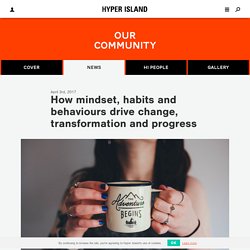

The 36 Questions That Lead to Love - NYTimes.com. 1094816893296338193. Work in the Future Will Fall into These 4 Categories. From The New York Public Library Organizations are more boundary-less, agile, global, and transparent — and will be even more so in the future.

Work and workers (yes, humans) will always be essential to organizations, but organizations themselves will be more diverse, and work will be organized, structured, and done in new ways, increasingly through arrangements outside of regular full-time employment. How can leaders navigate this new digital work ecosystem? How should your organization plan for the changes ahead? Important clues are emerging from a unique consortium of human resource executives and other leaders. To help frame where the world of work is going, CHREATE leaders identified five fundamental forces driving change: Social and organizational reconfiguration. Each of the four quadrants describes a different kind of organization, with different approaches to strategy, talent, and work: Current state. How can you use this map to navigate the evolving work ecosystem? How mindset, habits and behaviours drive change, transformation and progress. In my work with Hyper Island, and the research I am doing on the future of learning and working, I’ve spent time observing people and behaviors.

It helps me when developing digital transformation programs for large corporations and it helps me being a better parent. I recently discovered that my five year old son had developed some bad habits, even at a young age — avoiding hard work, not being as curious anymore and a severe addiction to a device, in his case an iPad. I see similar behaviours everyday in the workplace. These behaviors become such a big part of who we are they can be hard to separate between what is a behavior and what is our identity. And in many cases they hide our ability to critically assess the world around us. Throughout my research I came across tools of titans by thought-leader Timothy Ferriss, which helped me change my view on change [pun intended.]
Develop a hypothesis of what needs to happen to reach a goal (e.g. Ask yourself "how do I want to be"? Stop. Personal MBA. Value Proposition Canvas: A Tool To Understand What Customers Really Want. The Value Proposition Canvas and book Value Proposition Design have been out for a while, but I wanted to share a new video we created to help explain the tool and how to create products and services that customers actually want.

In addition to this video, we also offer a course on Mastering Value Propositions. This online course will teach you how to better understand customers, and create value propositions that sell. Click here for more details. Notes on usage. We encourage you to share the video with your networks, colleagues, and clients. We do however insist on not modifying the video; to not integrate the video into products; and to always reference Strategyzer as the source.
Production Credits: Collaborative Overload. Collaboration is taking over the workplace.

As business becomes increasingly global and cross-functional, silos are breaking down, connectivity is increasing, and teamwork is seen as a key to organizational success. According to data we have collected over the past two decades, the time spent by managers and employees in collaborative activities has ballooned by 50% or more. Certainly, we find much to applaud in these developments. However, when consumption of a valuable resource spikes that dramatically, it should also give us pause. Consider a typical week in your own organization. What’s more, research we’ve done across more than 300 organizations shows that the distribution of collaborative work is often extremely lopsided. But this “escalating citizenship,” as the University of Oklahoma professor Mark Bolino calls it, only further fuels the demands placed on top collaborators. Precious Personal Resources These three resource types are not equally efficient.
Redistributing the Work. Collaborative Overload.